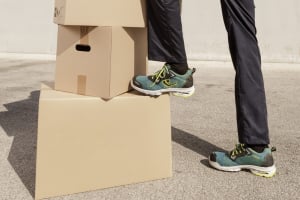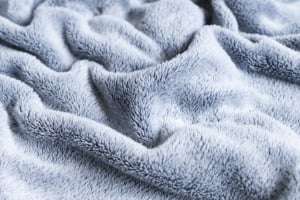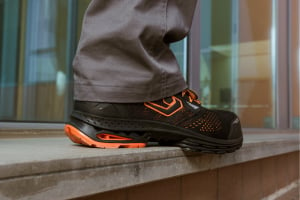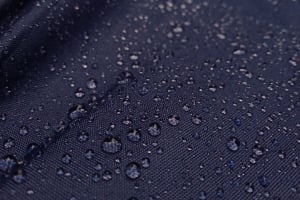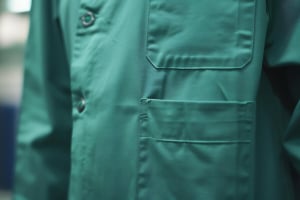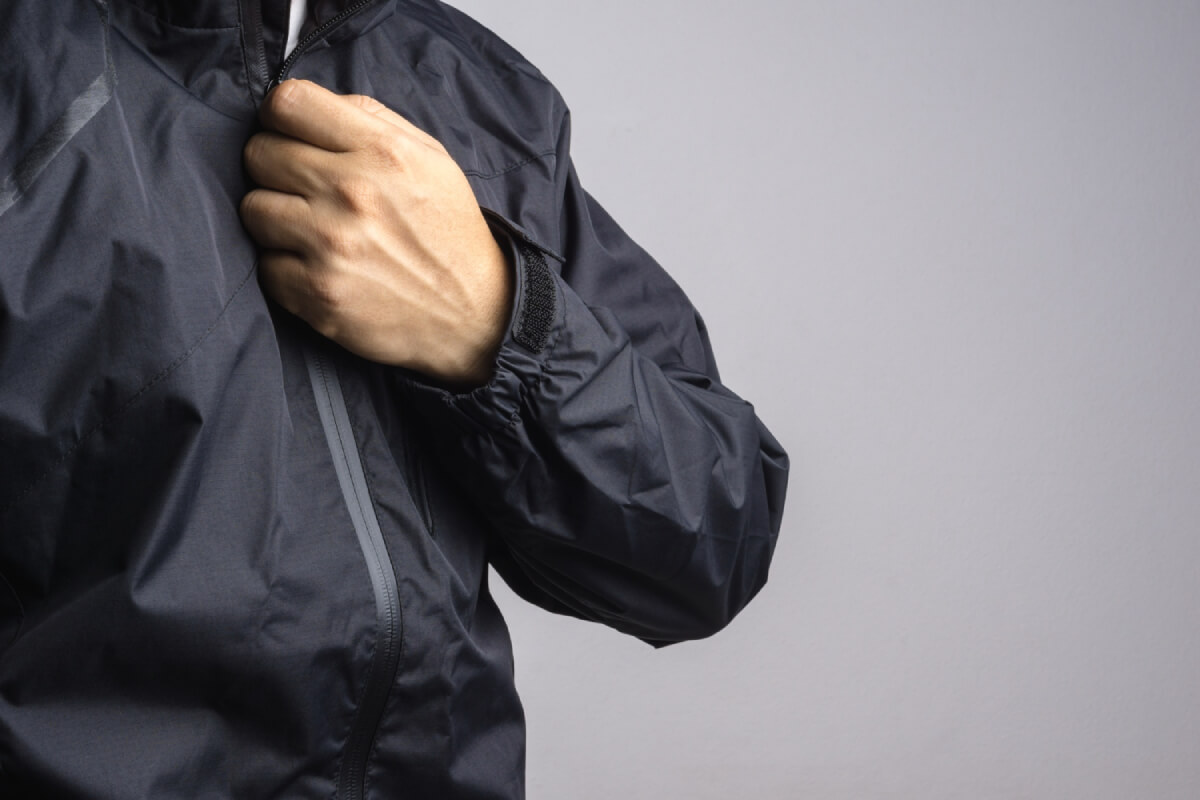
Softshell: Work jacket fabric for waterproofing
When looking for a reliable work jacket, waterproofing is often a priority. Softshell fabric is an innovative solution that we are looking at today, given its many protective qualities, particularly in harsh weather conditions.
Summary
Softshell fabric
Softshell is a revolutionary technical fabric, designed to meet the demands of professionals and athletes. Its structure generally consists of two to three layers laminated together, each having a specific function. The outer layer is made with synthetic fibers such as polyester or nylon, providing resistance to abrasions and climatic elements. Under this protective layer, one or two intermediate layers act as barriers against water while allowing perspiration to escape. The inner layer, often made of fleece or similar material, provides thermal insulation while remaining soft to the touch, increasing comfort during prolonged wear. This combination of layers makes Softshell a fabric that is not only waterproof but also breathable, capable of maintaining a stable body temperature.
When comparing Softshell to other fabrics like hardshell, several key differences emerge. The hardshell, often used for rain clothing and mountaineering, is typically stiffer and less adaptable than Softshell. Its main quality lies in its ability to offer absolute waterproof protection and superior wind resistance, which is essential in extreme weather conditions. However, this level of protection often comes at the expense of breathability and flexibility. In contrast, Softshell, with its superior flexibility and breathability, is more suited to high-intensity activities where comfort, mobility and temperature regulation are paramount. It is therefore an ideal choice for professionals and athletes who need comfortable workwear that support their performance without compromising protection.
History and evolution of Softshell
Softshell fabric emerged in the 1980s, initially designed for the specific needs of mountaineers and skiers who were looking for clothing that could offer both protection from the elements and flexibility for movement. This need arose from direct confrontation with extreme weather conditions in the high mountains, where traditional clothing was not enough to provide sufficient insulation while still allowing intense physical activity. The rapid adoption of Softshell by other sectors, such as construction, logistics and even the military, testifies to its ability to meet varied needs, ranging from simple protection against the cold to a real barrier against adverse climatic conditions.
Since its creation, Softshell fabric has constantly evolved, incorporating significant technological advances to improve its performance. One of the major developments has been the integration of waterproof and breathable membranes such as Gore-Tex or eVent, which have made it possible to achieve an optimal balance between waterproofing and ability to wick away perspiration. These innovations have made Softshell not only more comfortable but also more suitable for a wider range of outdoor uses, increasing its popularity among professionals engaged in physical activities in harsh environments. Other improvements, such as the addition of antimicrobial and UV treatments, as well as the use of recycled materials, show manufacturers' commitment to addressing contemporary environmental and health concerns.
Softshell technical properties
Softshell fabric stands out for its ability to provide effective protection against water while maintaining a high level of breathability. This performance is mainly due to the use of special membranes, such as those in polyurethane or PTFE (polytetrafluoroethylene), which are strategically integrated between the outer and inner layers of the fabric. These membranes have microscopic pores that are small enough to prevent water molecules from entering, but large enough to allow water vapor molecules (sweat) to escape. This cutting-edge technology not only provides protection against rain and wind but also contributes to optimal thermal comfort by preventing the accumulation of excessive body heat.
In order to guarantee the reliability of Softshell jackets, they are rigorously tested to meet and often exceed current industry standards. These tests include water column assessments, where a specific amount of water is applied to a fabric surface to check its resistance to penetration. Standards such as ISO 811 and AATCC 127 are frequently used to certify waterproofing levels. In addition to waterproofing, the durability of the fabric is also tested through abrasion and repeated flexing processes to ensure that the fabric can withstand daily wear and tear without compromising its protective properties. These rigorous tests ensure that each Softshell jacket is not only water resistant but also durable and reliable in the most demanding conditions.
Other functional properties
Breathability is an important criterion for any clothing intended for professional or outdoor activities. Softshell jackets incorporate advanced fabrics that allow air to circulate and perspiration to evaporate, helping to maintain a stable body temperature, even during intense physical work or variable weather conditions. This moisture management is ensured by the porous structure of the membranes used, which facilitate the evaporation of internal humidity while blocking external humidity, thus providing superior comfort and continuous protection against humidity and heat excessive.
The Softshell also offers excellent thermal insulation, essential for cold or changing environments. This insulation is obtained thanks to the inner layer of fleece or similar materials which traps body heat. However, what sets Softshell apart is its ability to regulate this heat without causing overheating, thanks to its natural breathability. This combination of insulation and ventilation makes the Softshell an ideal choice for conditions where the temperature can vary significantly during the day or depending on the activity.
In the workplace, particularly on construction sites or in harsh outdoor conditions, the durability of clothing is essential. Softshell jackets are designed to withstand not only the natural elements but also the rigors of everyday work. They are made with abrasion-resistant materials and reinforced seams to withstand frequent and intense use. In addition, the surface treatment of Softshell fabrics makes them resistant to tears and snags, thus guaranteeing reliable and durable workwear, capable of maintaining its protective properties and appearance over the long term.
Softshell in workwear
In the world of workwear, comfort and mobility are essential to ensure not only performance but also user safety. Softshell jackets are specially designed to provide maximum flexibility, allowing users to move freely without restriction. The combination of elastic fabrics and ergonomic cuts ensures that the jackets adapt to body movements, reducing fatigue and increasing work efficiency. Additionally, the lightweight materials used in Softshell jackets also contribute to better overall comfort, which is necessary for long working days.
Softshell is extremely versatile, making it ideal for a variety of professions. In the construction industry, workers benefit from the durability and protection from the elements that Softshell provides, while still maintaining full range of motion to perform physical tasks. Landscapers, too, find great value in these jackets, as they protect them from wind and light rain while allowing them to remain active and comfortable in changing environments. Additionally, for professionals managing outdoor events, where weather conditions can change quickly, Softshell jackets offer a practical solution to stay protected without the need for frequent outfit changes.
Softshell maintenance
Maintaining the integrity and appearance of your Softshell jackets requires proper care. We recommend washing your jackets in cold water on a delicate cycle to preserve the fibers and technical membranes of the fabric. It is advisable to avoid the use of hot water which could damage the fabric or alter its waterproof and breathable properties. When drying, opt for air drying rather than machine drying, which will help preserve the elasticity and finish of the fabric. If you must use a dryer, be sure to set it on a gentle, low heat cycle to minimize the risk of wear and tear.
When it comes to cleaning products, it is crucial to choose mild detergents specially formulated for technical fabrics. These products will help maintain the functional qualities of the Softshell without compromising texture or color. It is important to avoid fabric softeners and bleaches, as they can clog the pores in the fabric's membrane, reducing its breathability and waterproofing. For stubborn stains, pre-treating with a suitable stain remover before washing can be beneficial, but always test on a small, hidden area first to ensure there is no negative reaction with the fabric.
Engage the future with Softshell
Through this article, we have explored the multiple facets of Softshell, a revolutionary fabric that is transforming the standards of work clothing. From its advanced composition to its properties of waterproofing, breathability and durability, Softshell presents itself as an optimal solution for demanding professionals. Its integration into work clothing is not only a response to functional needs; it is also a commitment to continuous improvement and respect for the environment. By adopting Softshell, companies can not only ensure the protection and comfort of their employees, but also affirm their commitment to sustainable practices. Thus, the choice of Softshell is much more than a technical decision – it is a step towards a future where performance and responsibility combine harmoniously.


